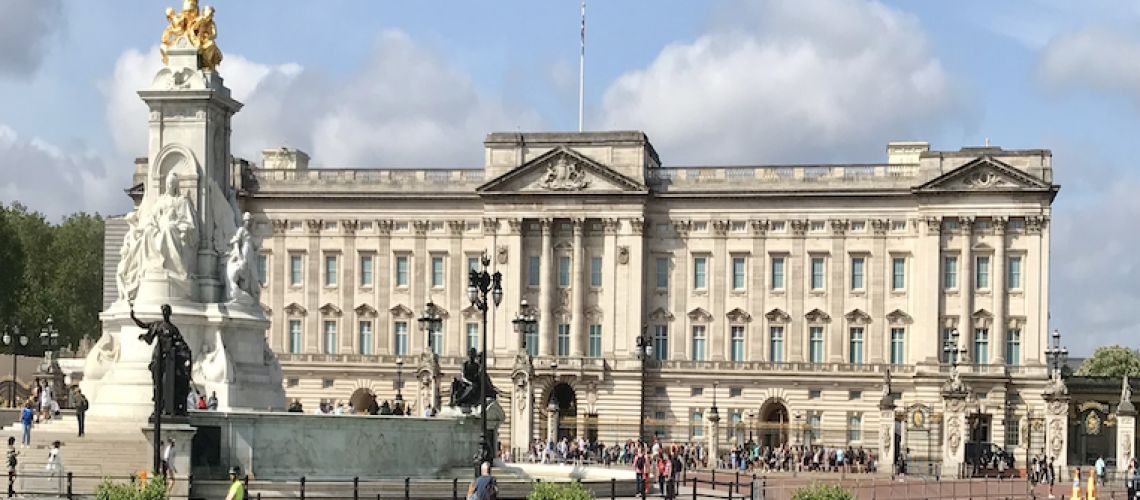Paul Waddams
Background
Following the death of Queen Victoria in 1901, her eldest son, King Edward VII, suggested that a Parliamentary committee should develop plans for a memorial to his late mother. Five architects were chosen to participate in a competition for the design and the eventual winner was Thomas Brock.
The Government declined to provide a grant for the memorial, instead funding was gathered from around the British Empire as well as from the public. This approach proved successful and more money was collected than was necessary. Funds were therefore diverted towards the construction of Admiralty Arch, the redevelopment of The Mall, the re-facing of Buckingham Palace and the construction of the formal gardens and gates surrounding the Victoria Memorial. These additional works were undertaken by Sir Aston Webb. The Memorial was unveiled in 1911, though it was not completed until 1924. The unveiling was presided over by King George V. His first cousin, Wilhelm II of Germany, was also present. Both monarchs were the senior grandsons of Queen Victoria and tragically would soon find themselves on opposing sides during the Great War. In his role as Home Secretary, Winston Churchill carried the text of the speeches.
Description
At the top of the central pylon, a gilded bronze Winged Victory stands on a globe. Beneath her are personifications of Constancy and Courage. All of these gilded figures are supported on a central pylon of Pentelic Marble from Greece. This rare and beautiful marble comes from a quarry on Mount Pentelicus, northeast of Athens. It is of exceptionally high quality and was used to construct many of the ancient buildings on the Acropolis, including the Parthenon (and the Elgin Marbles) from about 495 to 429 BC. Today, the ancient quarry is protected by law and is used exclusively to obtain material for the Acropolis Restoration Project.
Surrounding the central pylon are statues of an enthroned Queen Victoria facing The Mall and of Motherhood facing Buckingham Palace. They are flanked by Justice and Truth. They were created from solid blocks of Lasa Marble from northern Italy.
At the four corners of the monument are massive bronze figures with lions, representing Peace, Progress, Agriculture and Manufacture. A nautical theme pervades the memorial with mermaids, mermen and hippogriffs all emphasising Britain’s naval power.
Thomas Brock described the symbolism of the memorial, saying that it was devoted to the ‘qualities which made our Queen so great and so much beloved’. For example, the figure of Motherhood represents her ‘great love for her people’.
Recent Uses
The Victoria Memorial has featured as the focal point for a number of important, national celebrations including the Queen’s Golden Jubilee in 2002 and Diamond Jubilee celebrations in 2012. The memorial marked the end of ‘Our Greatest Team Parade’ on 10 September 2012 which celebrated the successes of the British teams at the 2012 Summer Olympics and Paralympics. It forms a backdrop to the closing stages of the annual London Marathon and features in numerous views of Buckingham Palace.

